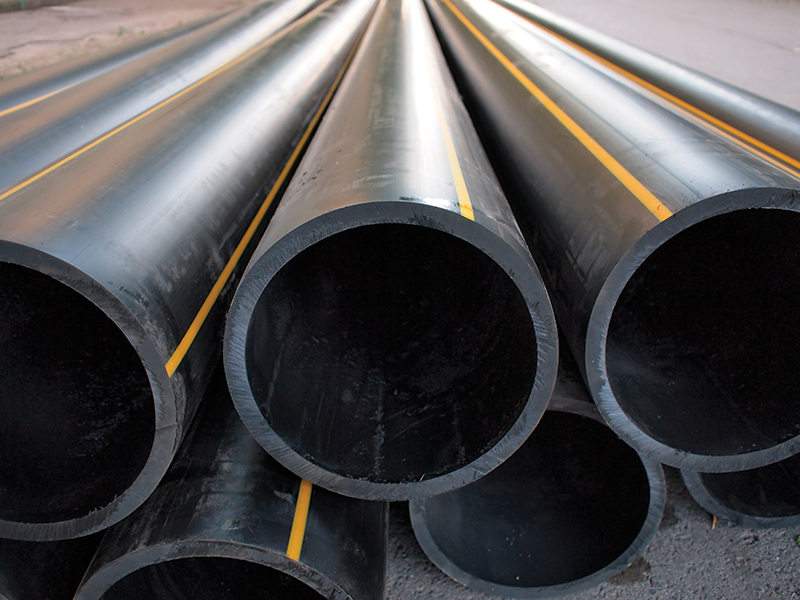Can Plastic Pipes Help Fix Our Water Infrastructure?
In this first of a series of two articles, plastic pipes’ advantages are laid out
Previous Article Next Article
By American Chemistry Council (ACC)
Can Plastic Pipes Help Fix Our Water Infrastructure?
In this first of a series of two articles, plastic pipes’ advantages are laid out
Previous Article Next Article
By American Chemistry Council (ACC)
Can Plastic Pipes Help Fix Our Water Infrastructure?
In this first of a series of two articles, plastic pipes’ advantages are laid out
Previous Article Next Article
By American Chemistry Council (ACC)

Plastic pipe is replacing traditional materials as communities across the USA upgrade an aging water infrastructure.

Plastic pipe is replacing traditional materials as communities across the USA upgrade an aging water infrastructure.

Note: This article continues the series of updates in Plastics Engineering from Plastics Make it Possible®, an initiative sponsored by America’s Plastics Makers® through the ACC. The next ACC article will focus on PVC pipe specifically.
There’s a lot of conversation about water these days, whether it’s about managing it through droughts, worrying about contaminants, or balancing urban and agricultural needs. And one topic—our aging water infrastructure—is likely to get even more attention because the pipes that deliver fresh drinking water and carry away wastewater in many U.S. towns and cities are old and leaking, wasting precious resources.
Water Loss
Each day there are hundreds of water-main breaks in the United States, resulting in expensive repairs that can tie up entire neighborhoods and clog traffic. And each day billions of gallons of water are lost from U.S. drinking systems during transmission. The American Water Works Association analyzed data from a sample of water utilities and found that water loss (typically measured as water that’s generated but not paid for) varied from 7% to 45%, averaging nearly 27%.
So according to this study, more than a quarter of the water transferred never makes it to the customer. If these same percentages were applied elsewhere, in theory, a state like California could meet its mandated 25% water-use reduction simply by preventing this average amount of water loss.
Replacing Decaying Pipes
While not all of this water loss is due to faulty water transmission, aging pipes contribute significantly. Decades-old lead, cast iron, steel, and cement pipes remain prevalent, and replacing them is a hugely expensive and disruptive affair. The U.S. Environmental Protection Agency says it will cost $384 billion over 20 years simply to maintain the existing drinking-water infrastructure. Replacing and expanding it to keep up with population growth could cost as much as $1 trillion. In the absence of upgrades, infrastructure failures will seriously disrupt water service, transportation, and commerce.
One question is: replace the infrastructure with what? The traditional materials that today are breaking down daily? Or advanced materials that can be more effective and last longer?
That’s where plastics could play a huge role, a role they already have begun to play.
Plastic pipes, of course, are commonplace today, having replaced traditional materials in many applications, particularly households. But technologies now allow plastic pipes to replace existing aging pipes without necessarily removing them, technologies that can dramatically reduce the cost and disruption of repairing and upgrading the water infrastructure. To demonstrate this advance, let’s take a look at a pipe replacement project in one of the USA’s most honored sites: Arlington National Cemetery.
Water for a Sacred Site
The final resting place for many of America’s soldiers, Arlington National Cemetery rests on rolling Virginia hills across the Potomac River from the District of Columbia. It’s a site that provided a strategic high-ground position during the Civil War. The curving pathways throughout the cemetery conform to the natural topography, and they are lined with stately flower gardens and majestic trees.
More than 60 years ago, a series of cast-iron water pipes was installed for fire suppression and other water use. The water pipelines snake around seventy sections of the cemetery, as well as up and down the hillsides. When the time came to replace these aging pipes, great care was needed not to disrupt the serenity and operations of a cemetery that needs to remain open for the average 11,000 visitors per day and multiple daily military funeral processions.
So instead of digging large trenches throughout the cemetery to remove old pipes and lay new pipes, engineers utilized pipe bursting technology that inserts high-density polyethylene plastic pipe into the existing pipe space. Small pits were dug on either side of the old pipe needing replacement. A metal bursting head attached to the replacement plastic pipe was placed in the pipe opening. From the other opening, the bursting head and pipe were pulled through the existing pipe space, bursting the old pipe and leaving the new pipe in its place.
By repeating this process, engineers replaced more than 44,500 feet (13,600 m) of existing cast-iron water mains with long-lasting plastic pipes. This process has satisfied the need to retain the environmental and operational integrity of the cemetery—it even occurred many times near high-profile areas such as President John F. Kennedy’s grave and the Tomb of the Unknown Soldier, with its hourly changing of the guard.
Spreading Technology
So engineers were able to replace the water pipes at a national cemetery full of hills and winding paths and revered structures. Fortunately, that same process can translate directly into towns and cities across the country. This technology is making inroads, saving communities time, disruption, and expense.
Some communities, such as Palo Alto, California, have been replacing aging conventional pipes with plastic pipes since the 1990s. After years of success, today more and more communities are turning to the benefits of this type of pipe, because:
- It’s tough and flexible, so it can be bent around cul-de-sacs and pulled through 2,500 feet (760 m) of existing pipe.
- The systems are designed to be resist corrosion and provide years and years of reliable service.
- Communities often can install these systems more economically than traditional systems.
- The pipes are well suited to areas prone to earthquakes or floods, due to their inherent flexibility and impact resistance.
- And, as previously mentioned, “trenchless” technology allows the pipe to be pulled into aging pipe with little surface construction or disruption.
Of course, there are many other types of plastic pipes that benefit the U.S. water infrastructure. As communities throughout the country struggle with managing and upgrading a decaying infrastructure, it’s likely that plastic pipes of all kinds will play an ever-increasing role in delivering water safely.
